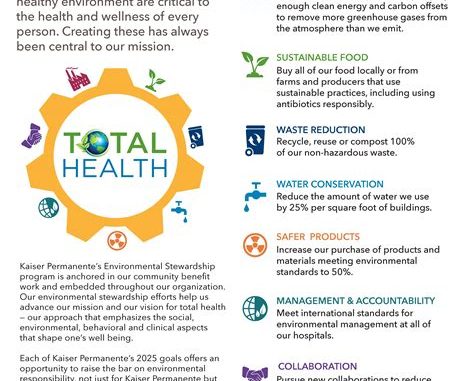
Explore the environmental impact, Allied Benefit improvement areas, sustainable practices, progress measurement, and stakeholder engagement for a greener future in our comprehensive guide. In today’s world, the need for businesses to adopt environmentally responsible practices has never been more pressing.
Allied Benefit stands at the forefront of this movement, recognizing that their operations can significantly influence the planet’s health. This blog post explores the various dimensions of Allied Benefit’s environmental commitments, diving deep into their understanding of environmental impact and the key areas where they aim to improve.
We will also highlight the sustainable practices they are implementing, how they measure their progress and success, and the importance of engaging and educating stakeholders throughout this transformative journey. Join us as we unpack how Allied Benefit is striving to create a positive change for our environment while setting a benchmark for corporate responsibility.
Understanding the Environmental Impact Allied Benefit
Understanding the environmental impact of various activities and operations is crucial for organizations looking to enhance their sustainability efforts and reduce their carbon footprint, as it encompasses the broad spectrum of consequences that human activities have on air, water, and land, and reveals the intricate interconnections between ecosystems and corporate responsibilities.
In particular, assessing the environmental impact of production methods, resource usage, and waste management allows organizations to identify critical areas where improvements can be made, ensuring that they not only comply with regulations but also embrace environmental stewardship as a core principle while promoting a culture of sustainability among their employees and stakeholders.
Moreover, by actively participating in the evaluation of their environmental impact, businesses can uncover opportunities for innovation that not only enhance efficiency and reduce costs but also align with the growing consumer demand for sustainable products and services, ultimately paving the way for a more resilient future for both the company and the planet.

Identifying Key Areas for Improvement Allied Benefit
In the quest for enhancing environmental sustainability, it is crucial to first identify the key areas where organizations can make significant improvements, especially when evaluating the environmental commitments of Allied Benefit, as this analysis serves as a foundational step towards establishing effective strategies that mitigate negative impacts on our planet.
Among the essential areas to focus on are waste management practices, which involve not only reducing the volume of waste produced but also implementing robust recycling programs that can help divert materials from landfills, thereby promoting a more circular economic model that aligns with contemporary sustainability goals.
Another important area involves the examination of energy consumption patterns, where organizations can seek to utilize more renewable energy sources, such as solar or wind power, in order to decrease their carbon footprint, which not only bolsters their environmental stewardship but also sets a compelling example for stakeholders and the wider community.
Implementing Sustainable Practices Allied Benefit
In recent years, many organizations, including Allied Benefit, have recognized the urgent necessity of implementing sustainable practices to reduce their environmental impact and promote a greener future; by integrating sustainable practices into their operations, they not only contribute positively to the planet but also enhance their brand reputation and create a more engaged workforce.
One of the primary strategies for implementing sustainable practices involves assessing the overall resource consumption of the organization, which includes examining energy usage, water consumption, and the waste generated, as it is crucial to have a comprehensive understanding of these factors in order to identify specific areas where improvements can be made, such as transitioning to renewable energy sources and reducing reliance on single-use plastics.

Furthermore, another significant aspect of implementing sustainable practices is the active involvement of all employees, as fostering a culture of sustainability not only encourages individual accountability but also promotes innovative ideas that can lead to operational efficiencies; ultimately, by embedding sustainability into the core values and strategic objectives of the organization, Allied Benefit can position itself as a leader in promoting environmental stewardship within the industry.
Measuring the Progress and Success Allied Benefit
In order to truly evaluate the effectiveness of the environmental commitments made by Allied Benefit, it is essential to implement a systematic approach that not only establishes clear measurable goals but also employs appropriate metrics that can accurately reflect the progress and success of these initiatives over time.
By utilizing tools such as data analytics and environmental impact assessments, Allied Benefit can track various indicators that highlight the effectiveness of their sustainable practices, from carbon footprint reduction to resource conservation, thereby allowing for a comprehensive understanding of how these efforts contribute to the overall environmental health of the communities they serve.
Moreover, regularly disseminating these findings to stakeholders ensures that all parties are not only informed of progress but also inspired to continue supporting the organization’s sustainable vision, which is crucial for fostering a collective commitment to ongoing improvement and engagement in environmental stewardship.
Engaging and Educating Stakeholders Allied Benefit
Engaging and educating stakeholders is an essential component for the success of any environmental initiative, as it not only builds awareness but also fosters a collective responsibility towards sustainability and environmental stewardship, which are critical in today’s increasingly environmentally conscious landscape.

Allied Benefit, with its strong commitment to sustainable practices, recognizes that the involvement of diverse stakeholders—including employees, clients, suppliers, and the community—is pivotal in driving meaningful change, and thus actively invests in comprehensive educational programs that aim to inform and empower these groups about the importance of sustainable practices and their potential impact on the environment.
Through initiatives such as interactive workshops, informative webinars, and collaborative projects, Allied Benefit effectively communicates the virtues of sustainable sourcing, waste reduction, and energy efficiency, creating a culture of participation and accountability that not only enhances the organization’s environmental performance but also inspires stakeholders to int
Frequently Asked Questions
What are the key environmental commitments of Allied Benefit?
Allied Benefit is committed to sustainability through initiatives such as reducing carbon emissions, promoting renewable energy sources, and minimizing waste in their operations.
How does Allied Benefit measure its environmental impact?
Allied Benefit uses various metrics, including carbon footprint analysis and waste audits, to assess and report on its environmental impact.
What programs does Allied Benefit support to promote environmental awareness?
Allied Benefit actively supports programs that educate employees and the community about sustainability practices and the importance of environmental stewardship.
What is Allied Benefit’s approach to renewable energy?
Allied Benefit invests in renewable energy projects and aims to power its facilities with green energy sources, such as solar and wind.
How does Allied Benefit involve its employees in environmental initiatives?
Allied Benefit encourages employee participation through volunteer programs, sustainability training, and incentives for eco-friendly practices.
What partnerships does Allied Benefit form to enhance its environmental efforts?
Allied Benefit collaborates with various environmental organizations and local governments to implement effective sustainability projects and initiatives.
How does Allied Benefit address waste management in its operations?
Allied Benefit has implemented a comprehensive waste management strategy that includes recycling programs and waste reduction practices to minimize landfill contributions.

Leave a Reply